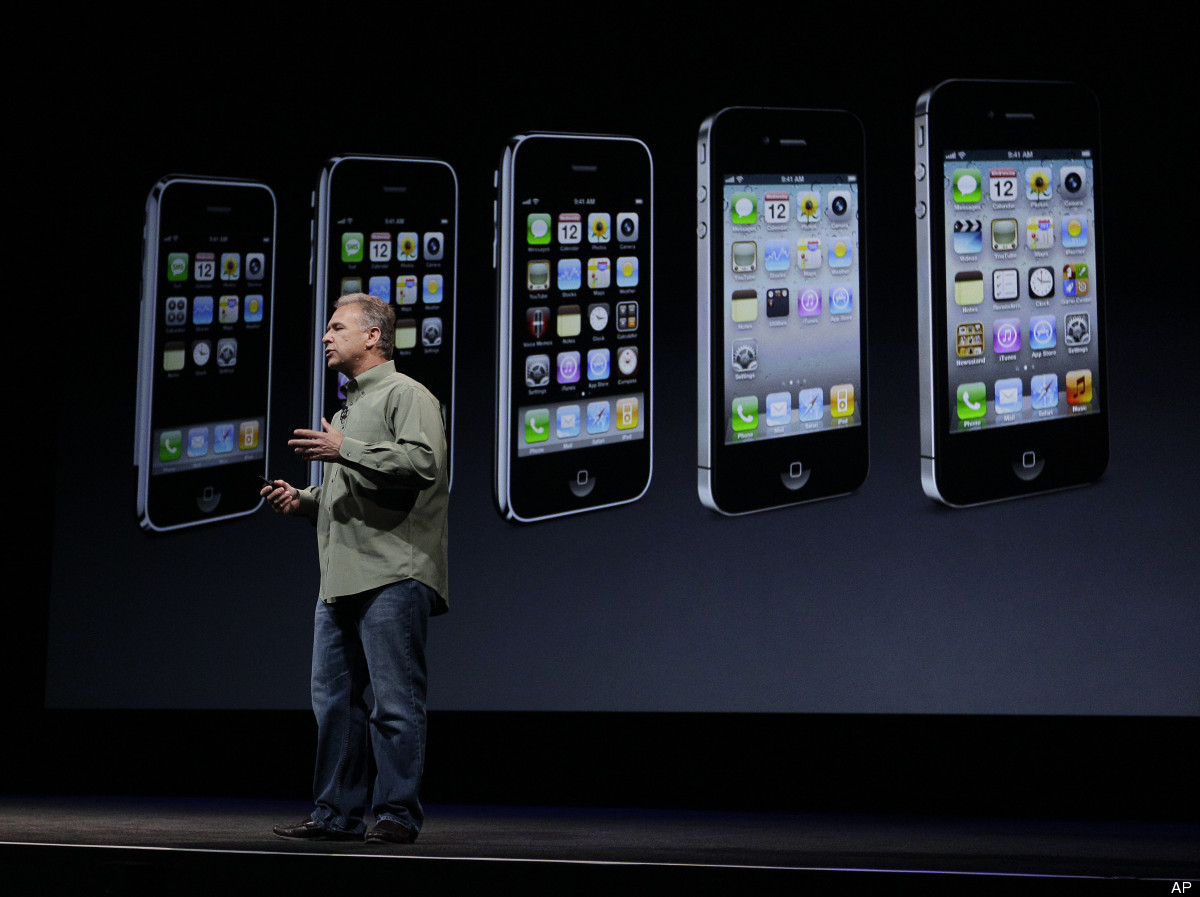
13 Sep iPhone 5: Bigger, Better and Thinner
Let the floodgates open.
Apple announced the latest addition to their highly successful iPhone line yesterday in San Francisco, unveiling a bigger, better and thinner iPhone. While the new iPhone certainly offers improvements over its predecessors, it may not be quite as revolutionary as many were expecting. In saying that however, the new iPhone will most likely break sales records, with one analyst predicting that Apple will sell 10 million iPhones by the end of September.
While the iPhone 5 is longer, it has not increased in width, with Apple’s Phil Schiller stating that the company rejected the direction chosen by many Android Phones:
 With the increase in height, comes a bigger screen. A 4inch screen to be exact, with a resolution of 1136 pixels by 640 pixels and an aspect ratio of 16:9, which is typical of HD widescreen video. This increase in aspect ratio will affect apps that have been developed for the old design. Such older apps will appear “letterboxed” on the iPhone 5, with black borders on the sides, but displaying normally within them. The iOS home screen will also experience a change with this new aspect ratio, with an extra row of app icons added.
With the increase in height, comes a bigger screen. A 4inch screen to be exact, with a resolution of 1136 pixels by 640 pixels and an aspect ratio of 16:9, which is typical of HD widescreen video. This increase in aspect ratio will affect apps that have been developed for the old design. Such older apps will appear “letterboxed” on the iPhone 5, with black borders on the sides, but displaying normally within them. The iOS home screen will also experience a change with this new aspect ratio, with an extra row of app icons added.
In terms of thickness, the new iPhone is 7.6mm thick, which is 18% thinner than the iPhone 4S. It is also lighter, due to the change in materials.
The iPhone 5 has a new unibody design made completely of aluminium and glass. The device is available with a black or white front; the white-front iPhone 5 has a natural aluminium back plate and the black one has an anodized black backing.
As predicted, the new iPhone will support LTE, and – unlike the new iPad – will be compatible with Telstra’s 4G network. However, it will use a Nano SIM, which is around 40% smaller than the micro SIM used in the iPhone 4 and iPhone 4S, which has helped Apple shrink the size of its latest smartphone.
The camera has also been upgraded. While the new iPhone’s camera has the same megapixels as the iPhone 4S (8 megapixels), it is the dynamic low- light mode, smart filter and panoramic features that set it apart. The low-light mode gives up to 2 f-stops greater low-light performance, while the new image processor in the A6 reduces noise and includes a smart filter to do better colour matching. Panorama photos can be taken natively, supporting the increased vertical space in the images.
Video has also been improved, with the rear camera capable of capturing video in 1080p with improved video stabilization and face detection. Taking a page from the HTC One XL, the new iPhone can also take photos while recording video. The front facing camera is 720p, which means FaceTime can now be done in HD video.
Audio has also been improved, with three microphones located in the front, the bottom and the rear. These aid in voice recognition and voice cancellation, with the earpiece also featuring noise-cancelling technology.
One of the more radical – and definitely controversial – changes, is the new dock connector which Apple call Lightning. The new connector is much smaller than the standard Apple 30-pin connector, which dates back to the iPods of many years ago. This means that accessories designed for the 30-pin connector will not connect directly to Lightning.
While this presents a whole lot of inconvenience for those with existing iDevice accessories, Lightning is reversible (meaning that you don’t need to orient it when connecting it to the device) and it is also more durable. While you will have to wait a while, Apple and third parties will most likely work on conversion accessories, with BOSE, JBL, Bang & Olufsen and others already working on new docks and speakers according to Apple.
The new iPhone will also ship with the latest iOS (iOS 6), which features Apple Maps, an update to Siri, Passbook and more. While the hardware itself may not offer the enterprise significant business advantages, the upgrades and features of iOS 6 definitely holds some benefits for business users.
Specs Recap
[list style=”list1″ color=”green”]
- Larger, 4 inch screen with 1136 pixels by 640 pixels and an aspect ratio of 16:9
- Faster A6 processor
- 7.6mm thick
- Aluminium case
- Supports Telstra 4G network
- iOS 6
- 8 megapixel rear facing camera with 1080p HD video recording
- Front camera capable of recording 720p HD video
- Noise cancelling microphones and earpiece
- Smaller dock connector
[/list]
The iPhone 5 will be available with Telstra when it arrives in Australia on September 21 and will start at $799 for the 16GB model, rising to $899 for 32GB and $999 for 64GB. Australia is again in the first wave of countries to receive the handset, joining the US Canada, France, Germany, Hong Kong, Japan, Singapore and the UK.
If the new iPhone just isn’t doing it for you, there are a host of new alternatives out there already or expected to arrive in the near future which would be worth checking out.



